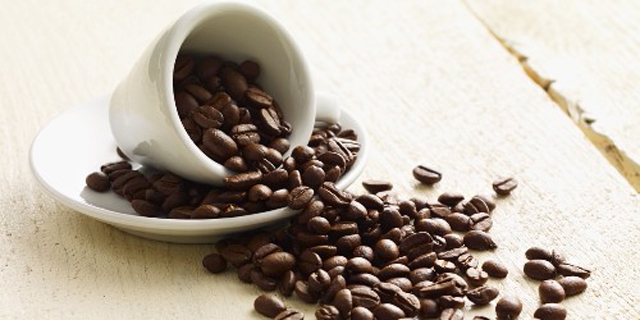I love coffee, ergo, I loved touring coffee fincas (plantations) and coffee beneficios (processing facilities) throughout coffee growing regions in Central America during my Trans-Americas Journey. I learned a lot, too. Especially after talking to Leonardo Vergnani, a guide at the certified organic coffee plantation at Finca Rosa Blanca Coffee Plantation & Inn in Costa Rica with more than 25 years of experienced in the buzz biz and Andy Newbom who visited El Salvador for years to source the best beans for Barefoot Coffee in California before moving to El Salvador to open Brew Revolution beer company.
Being that I know how much Latinos love their coffee; here’s what the pros want TLK readers to know about buying, storing and brewing great coffee.
BUYING GREAT COFFEE
Packaging Matters
It doesn’t have to look pretty, but the composition of the bag your coffee comes in is important. Vergnani recommends laminated packaging made up of an oxo-biodegradable plastic inner layer and a paper outer layer. This type of packaging is nicer to the environment and better than a simple paper bag when it comes to ensuring freshness. The other main types of packaging–plastic and aluminum–are impossible to recycle. Avoid vacuum packed coffee altogether. The process of vacuum packing actually removes some of the essence of the beans.
Look for Freshness Valves
Those little plastic air valves in some coffee packages are important too. They preserve the quality of the coffee because they allow excess gases built up during the roasting process to exit the bag. Once the internal pressure of the package is equal to external pressure some gas remains in the package where it helps keep the coffee fresh. That’s why they’re called “freshness valves.”
Don’t Trust Your Sniffer
One drawback of the freshness valve is the temptation to judge a coffee by the way it smells when you squeeze the bag. ”Judging a coffee from its smell is only part of the experience,” says Vergnani. ”It’s the combination of fragrance and flavor that determine quality. You can cover the smell of a pig by spraying perfume on it,” he adds, “but that’s certainly a waste of perfume.”
Buy Whole Beans
Ground coffee provides a greater surface area that could be impacted by the three enemies of freshness: humidity, air, and sunlight. Also, it takes a higher density, higher quality bean to remain whole during the roasting process. Lower quality coffee beans grown in lower elevations often break and split during roasting and are immediately ground for sale.
Expensive Isn’t Always Better
But Newbom believes that any coffee under $8 a pound will not be good quality.
Next, how to store and brew great coffee…
[pagebreak]
STORING GREAT COFFEE
Don’t Stock Up
For freshness’ sake, Vergnani recommends buying enough coffee to last a week. “If we buy less coffee more often in proper packaging (see above) from a reputable source we will always enjoy a better cup of coffee,” he says.
Foil Coffee’s Three Freshness Foes
“Humidity, exposure to air and sunlight are the worst enemies of coffee,” says Vergnani. Foil them by storing your coffee in its original packaging (as described, above) and seal it as tightly as possible. Once the package has been opened try to use the coffee as soon as possible. Never store your coffee in a clear glass container since that lets sunlight in.
Storing coffee in the freezer is a good idea if it takes you more than a week to get through your stash because lower temperatures slow down the molecular activity of coffee and the quality is better preserved. One warning: some people believe that the viscosity of the essential oils in coffee are affected by low temperatures and fear that when frozen coffee beans are ground the oils are more likely to stick to the blades or burrs of your grinder and not stay in the coffee.
BREWING GREAT COFFEE
Invest in the Right Tools
Newbom recommends using a French press. “It’s nearly fool-proof, makes killer coffee and lets all the flavor shine through.” He also recommends spending “at least $125″ on a good grinder.
“Brewing great coffee is simply about extracting the soluble compounds from the beans evenly,” Newbom explains. To do that, you need to slice the coffee beans, not grind them into powder. That job is best left to something called a “burr grinder” which uses two or more plates to slowly slice (not chop or grind) the beans into finer and finer pieces that are as even as possible.
BONUS: Learn to Spot the Tricks
A common trick to make low-grade coffee seem high-grade is to add sugar to the beans during roasting to produce a glossy, dark color. To determine if your coffee was roasted with sugar put a teaspoon of ground beans into a glass of cold water. If the water turns golden brown within the first minute, your coffee was roasted with sugar.


![Making Mealtime Matter with La Familia: Easy Sofrito [Video]](https://thelatinkitchen.com/wp-content/uploads/2015/10/sofrito-shutterstock__0-500x383.jpg)
![Easy Latin Smoothies: Goji Berry Smoothie [Video]](https://thelatinkitchen.com/wp-content/uploads/2015/12/goji_berry-shutterstock_-500x383.jpg)
















![Fun and Fast Recipes: Fiesta Cabbage Salad [Video]](https://thelatinkitchen.com/wp-content/uploads/2015/11/fiesta_cabbage_slaw-shutterstock_-500x383.jpg)









